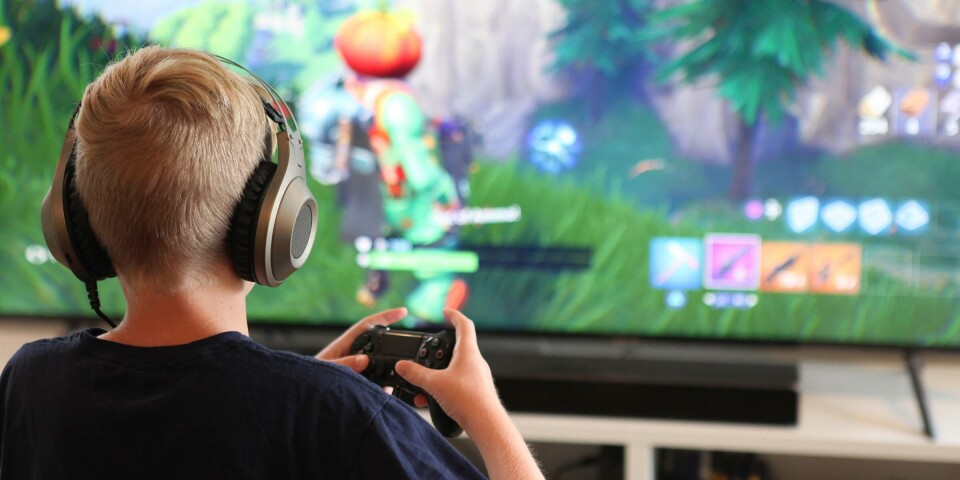THIS CONTENT IS BROUGHT TO YOU BY Oslo Metropolitan University - read more

Fear being bullied: Children pay to become popular in video games
Kids risk being bullied or isolated if they don’t spend money on skins or equipment. Researchers have mapped how young people get manipulated into spending money while gaming.
“We find that skins, which refer to how you appear in the game, have a crucial social function,” Clara Julia Reich says.
“Children may experience being called poor if they haven't spent money on their character. Children who have spent money on their in-game character can gain increased attention and other advantages, thus buying popularity,” Kamilla Knutsen Steinnes says.

Almost all children and teenagers play video games, making it a crucial social meeting place.
Online is part of everyday life
The two researchers at OsloMet's National Institute for Consumer Research SIFO, have gamed with children aged 10 to 15 to learn more about how they are influenced to spend money in games.
The research has resulted in two reports on manipulative game design commissioned by the Ministry of Children and Family Affairs. The government is currently working on a video game strategy.
The researchers explain that the gaming market integrates with everything else children do in life.
“There's no sharp distinction between their online and offline world. These are just different parts of the social world they navigate, and appearance, or skins, are important identity markers,”Steinnes says.
As Frank (13 years old) puts it:
“If you don't play with anyone, you kind of have nothing to talk about at school.”
Young people express their interests through the games they play, the groups they join, and the well-known brands they buy. Social influence from friends is a significant motivation for spending money in games, as are trends from social media.
“Kids into football play FIFA and spend money on in-game items that confer status, while others spend money on effects from Nike, Balenciaga, or Star Wars. They are influenced by memes and trends on platforms like TikTok,” Reich says.

Body-image pressure and scams
With joy and camaraderie also come downsides, such as exclusion and bullying.
“Some of the teens talk about racism and gender discrimination, and we see examples of digital body-image pressure,” Steinnes says.
Girls are especially vulnerable, as experienced by Sidra (14 years old):
“I heard things like 'go back to the kitchen', and it was like 'you're a girl, die, die, die'. It was, like, very graphic.”
Many also experience being scammed and having their skins stolen. The researchers believe many lack consumer competence, which is necessary to avoid being deceived.
“This is problematic because children and young people are a vulnerable consumer group navigating almost unregulated markets on their own,” she says.
“Young people have fantastic technical gaming competence, but consumer competence is lacking. There's also a significant difference in how much parents get involved,” Reich says.
She notes that not all adults have sufficient digital competence either.
Influenced by ‘dark patterns’
Additionally, the gaming world has changed enormously in recent years.
“Most games today are free to play, but with many different ways to spend money within the game. Game developers make money from people spending a lot of time there,” Reich says.
The researchers have identified 13 different forms of manipulative or unethical design, called ‘dark patterns’, which encourage players to invest more time, money, or personal data than they had intended.
The report categorises manipulative design into four categories: visual design, unclear labelling, time-based elements, and gambling mechanisms.
“Manipulative design is interfaces that force, pressure, or trick consumers into making choices that are in the company's best interest, by exploiting the users' weaknesses,” Steinnes says.
Gambling, surprises, and rewards
Children in the study spent from a hundred to over a thousand Norwegian kroner (10 - 100 USD) on in-game items per year.
Many of the games they played featured gambling mechanisms, like loot boxes (surprise packages) or wheels of fortune. There were examples of free trials of features that later cost money once users became accustomed to using them. These could be products available for only a certain period, often with a countdown clock, and increasingly, seasonal items like Halloween specials or Christmas specials.
Game passes, giving buyers the opportunity to play as much as they can for a certain period, like a month, are also common.
“We also found a few examples of consumer-protective design, or ‘anti-dark patterns’. For instance, you might have to press twice to actually buy something,” Steinnes says.
Is regulation possible?
Gaming is a global billion-dollar industry and a massive marketplace. Currently, little is known about how young people experience and are influenced by advertisements in games.
Reich and Steinnes are working to fill these knowledge gaps.
Regulating a global market from one country is difficult, and there should be consistent rules across the EU, according to the researchers.
References:
Reich, C.L. & Steinnes, K.K. Barns forbruk i videospill og hvordan det påvirker sosiale relasjoner. Delrapport 2 fra prosjektet «Pay to play» (Children's Consumption in Video Games and How It Affects Social Relationships. Sub-report 2 from the project 'Pay to Play'), SIFO-rapport nr. 13-2023.
Steinnes et al. Kartlegging av manipulerende spilldesign. Delrapport 1 fra prosjektet «Pay to play» (Mapping of Manipulative Game Design. Sub-report 1 from the project 'Pay to Play'), SIFO-rapport nr. 12-2023.

This content is paid for and presented by OsloMet
This content is created by Oslo Metropolitan University's communication staff, who use this platform to communicate science and share results from research with the public. Oslo Metropolitan University is one of more than 80 owners of ScienceNorway.no. Read more here.
More content from OsloMet:
-
Researcher: Local government was key to managing the pandemic
-
"Norwegians practice a friendship version of a ‘one-night stand'"
-
"We need to talk about how we assess teacher students"
-
Cannabis use in Norway has increased: “Not everyone needs moral lectures or worried looks"
-
Many children with ADHD do not thrive at school
-
An out-of-control race: Why we fear artificial intelligence




































